Is this still the best place to be a puffin?
- Published
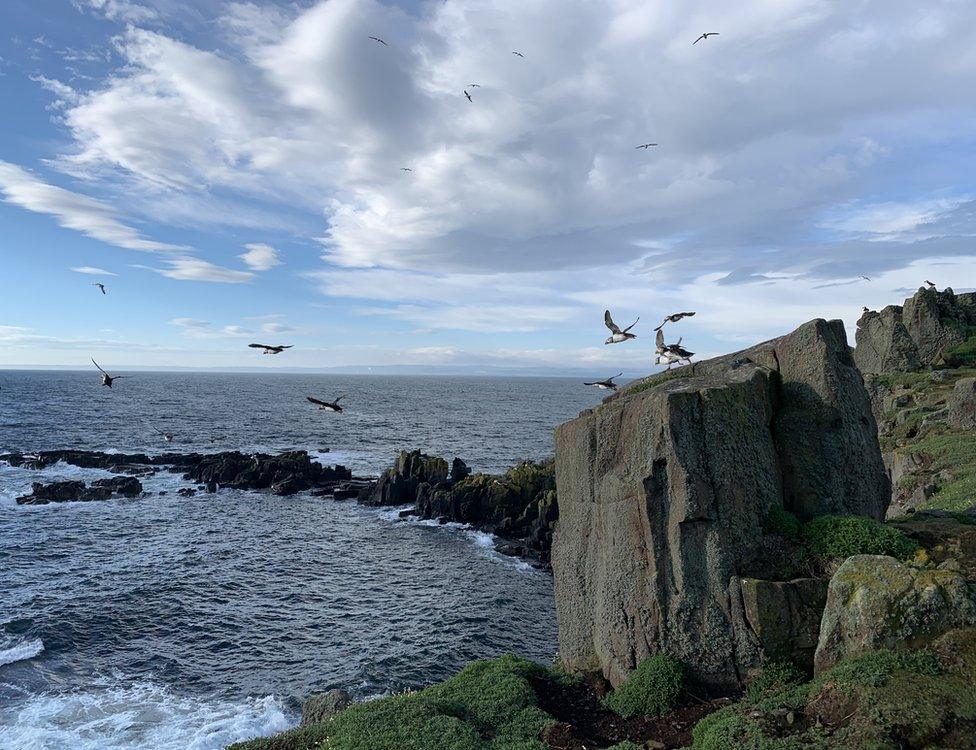

"It was probably the best place in Britain to be a puffin in those days," says Prof Mike Harris matter-of-factly, sitting outside what was once a lighthouse keeper's cottage on the Isle of May.
He's thinking back to 1972 when intensive research into puffins started on this dinky Scottish Island where the Firth of Forth meets the North Sea. It's a splinter of rock only half an hour by motor boat from the port of Anstruther on the Fife Coast, but May seems a world away from the mainland.
In high summer it teems with wildlife. It's internationally recognised for seabirds - the puffins of course, but also razorbills, guillemots and kittiwakes too, as well as migrating birds like arctic terns which pitch up in the summer.
Seals lounge on the rocks on the eastern side of the island and bob below the cliffs on the western side, and a population of rabbits pop in and out of burrows all over the place. A keen eye might even spot a whale breach in the seas around here.


The balance of the species hasn't always been like this though, and when Harris first came to May in the early 1970s there were only around 2,000 breeding pairs of puffins.
Today the number is around 40,000 and you might be forgiven for thinking that the trend has only been in one direction.
In fact, 10 to 12 years ago there were around 80,000 pairs on May. The population decline observed over a period of a few years - when almost half the breeding pairs were lost - is something the researchers stationed on the island today keep coming back to.
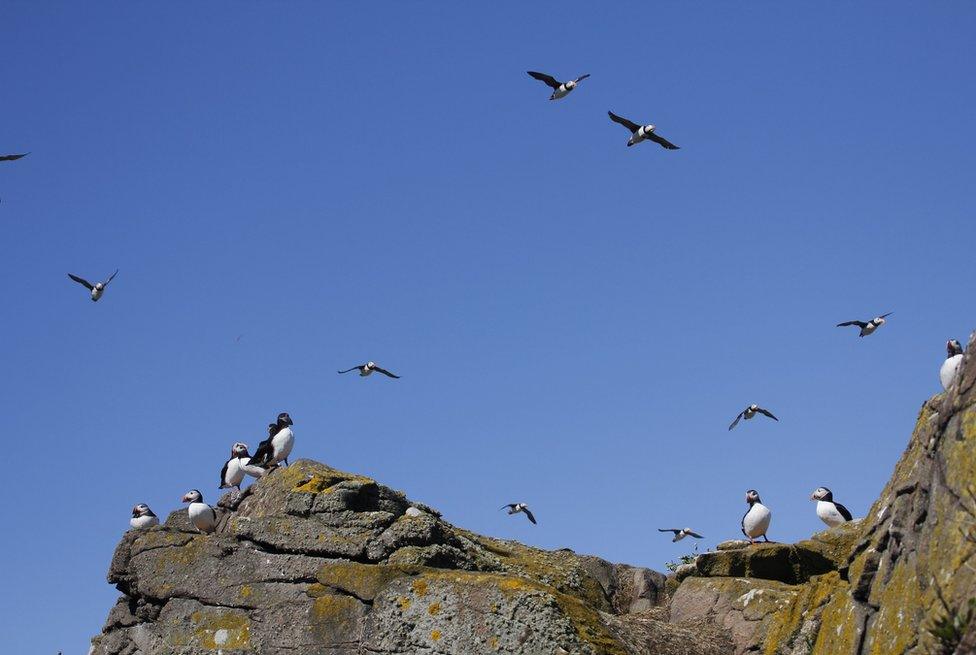

The leading theory is that particularly bad weather over several winters, when life is already hard for the puffins, made it so difficult for them to catch food that thousands simply starved.
Puffins are visual predators, and when storms churn up the sea they struggle to find the small fish they prey on.

Find out more
Planet Puffin is a Radio 4 series charting this year's puffin breeding season on the Isle of May. Hear the last report on the PM programme on Monday 29 August. There is also a podcast of the series available.

The population on May has been relatively stable since the population crash of a few years ago, but with forecasters predicting that climate change will lead to more frequent and more severe storms, the researchers here are on their guard.
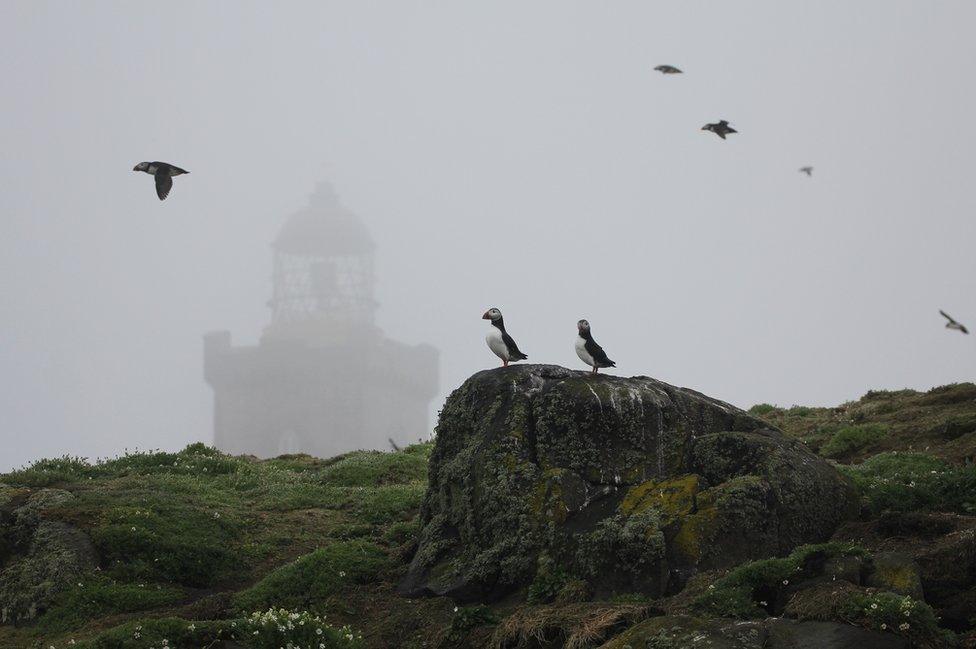

Life on May was rudimentary when Harris began his research. There was no running water or electricity, or the internet connection on which modern science relies, but many of the research activities that were pioneered then are still being used on the island.
The puffin colony here is probably the best understood in the UK, thanks to Harris, Prof Sarah Wanless, a fellow researcher from the Centre for Ecology and Hydrology (CEH), and CEH field manager Mark Newell.
The data they hold going back decades means that changes in the puffin population can be tracked over time and trends spotted.
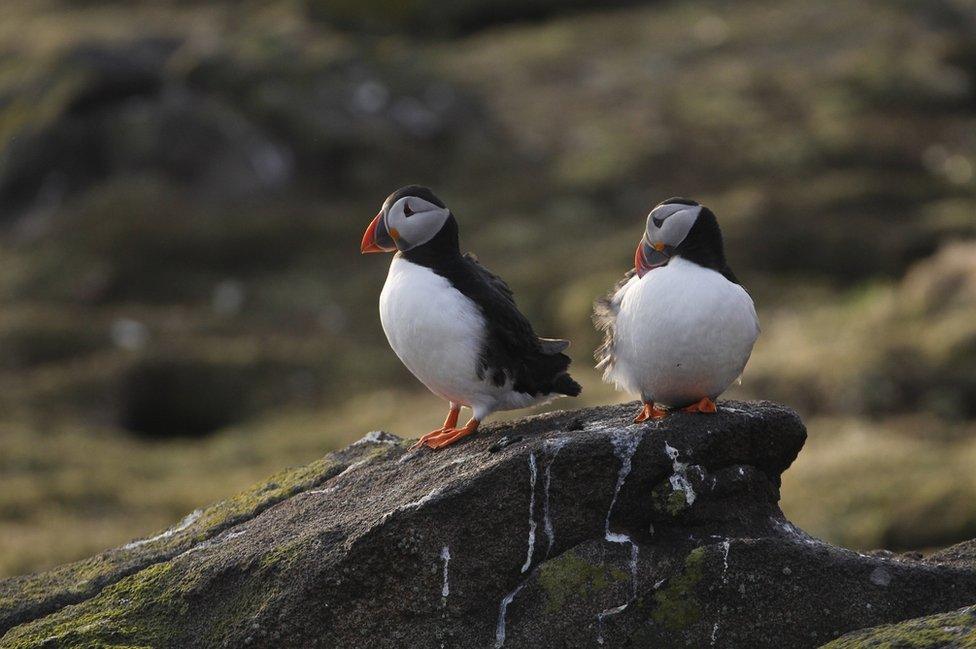


Newell spends the whole summer breeding season carrying out research. He and the other staff and volunteers come out in April when the puffins themselves start to arrive after spending the winter at sea. They typically return to the same colony to breed, bobbing in the swell around the island before they come ashore to meet their mate - the same one they will stay with for their whole lives, which is often more than 20 years.
They nest in burrows, dug into the grassy slopes around the south and east of the island, and amazingly each pair usually returns to the very same one year after year.
With 40,000 pairs of puffins on May, parts of the island are completely honeycombed below the surface, a subterranean network that is the birds' private domain.
Each pair lays a single egg in the burrow, protected from marauding gulls and other predators.
When the chicks hatch, the adult pairs go into a feeding frenzy, shuttling back and forth to their foraging grounds and back to return fish for the young which need a lot of energy to grow.
The food the puffins eat - sandeels, narrow silvery fish that grow to several centimetres long - are one of the main concerns for the researchers here.
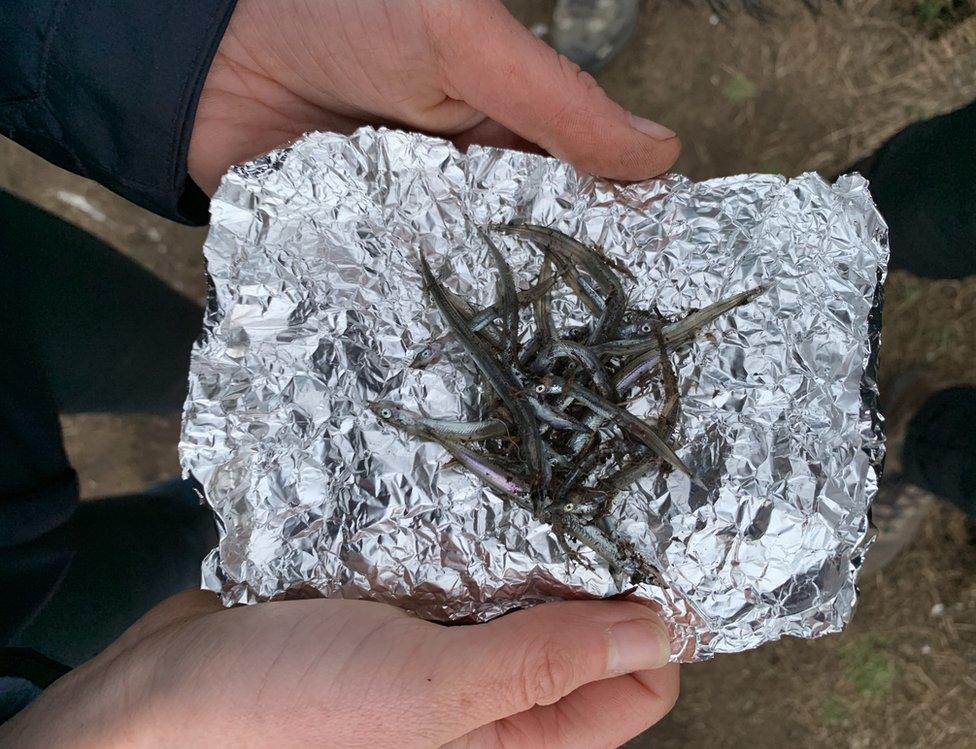

The bigger and better the fish, the more energy the puffins and their chicks derive, so the overall health of the population is directly linked to the food supply.
Researchers have a cunning method for monitoring the fish. Regularly throughout the season, they head out early in the morning and late in the evening to erect giant mist nets, which are difficult to see in the low light.
They then wait for an errant puffin to fly into the net.
Before the puffin is released, scientists collect the fish it was carrying back to the burrow, for inspection later.
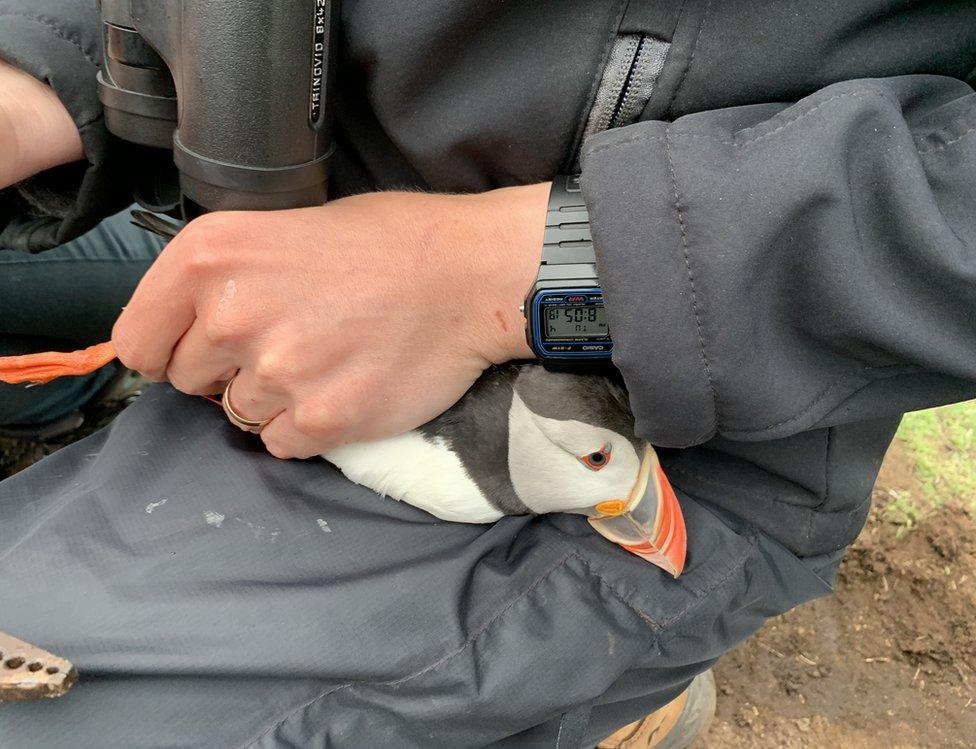

Thousands of sandeels are collected over the season to be counted, weighed and measured.
Over the years, this painstaking work has revealed a gradual shrinking of their average size, and the best guess as to why takes us back to climate change.
The sandeels feed on plankton, which require cold water like that in the North Sea. But as the water warms, the plankton is becoming less abundant.
This effect can be seen year by year, and as a trend over time, and has a knock-on effect right up the food chain. Less plankton means smaller, less nutritious sandeels, which in turn means the puffins have to work harder and expend more energy to find enough for themselves and their chicks.
The availability of food has a long-term impact on the puffin population too, carrying over from season to season.
The birds will go into winter depleted from a summer in which they have struggled to feed. They then become weakened from a harsh winter, which in turn hampers their ability to forage and feed their chicks in the summer.
The puffin is already classed as vulnerable by the International Union for Conservation of Nature, and the population is decreasing across much of its European range.
According to the RSPB, it is particularly prone to adverse changes in the environment because its breeding population is concentrated on a small number of sites.
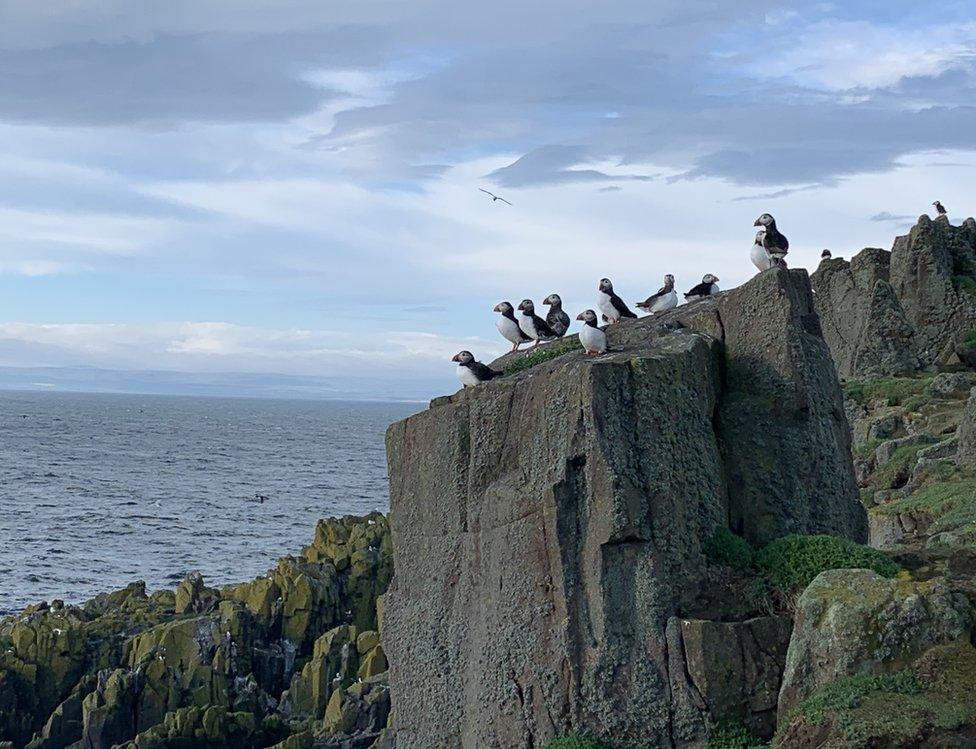

This year on May it's been a moderate breeding season, a little below average but within the normal range.
This is the value of long-term monitoring - being able to set individual years in the broader context of population change and assessing the overall health of the puffin colony.
Mark Newell has been coming to the island for more than 20 years and at the end of another breeding season reflects on the fate of the puffin.
"At the moment things seem to be fairly steady," he says. "But it only takes what might seem a fairly small change in the environment, and that could cause a large change in their numbers, so we keep coming back to keep a check on them and hope that our impacts on the environment aren't impacting heavily on the puffin populations."


Photographs by Marine Quintin